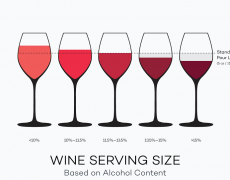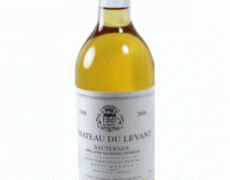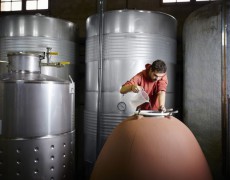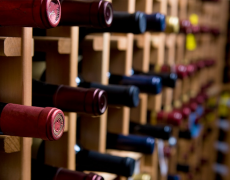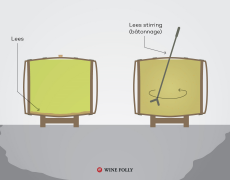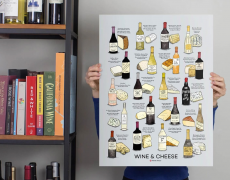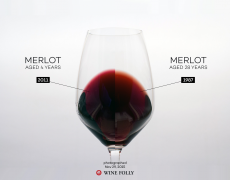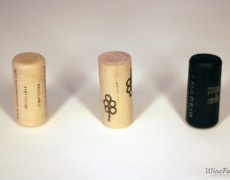There’s nothing quite like opening a bottle that’s been cellared for many years. Not only do wines evolve as they age, but they also serve as a time capsule into the past.
Your future you will thank you for starting a wine collection.

There is a big difference between buying wine and collecting wine. Buying wine is a somewhat random effort based on likes and preferences in the moment. Collecting wine, on the other hand, is a long-term commitment that requires vision and direction. With a collection, you still get to buy what you like, but it will be supported by your own rigorous research and choices.
Great collectors demonstrate talent in choosing great wines: creating a collection that is greater than the sum of its parts.

Prerequisite You don’t need to have a ton of money to start a wine collection, but you do need good storage. If you store wine in poor conditions it will degrade quickly and not be applicable for resale. For these reasons, you’ll need a location that maintains a consistent cold, damp, environment all year-round (52 ℉ / 11 ℃ and 75% humidity).
- A cellar (maybe yours, your parents’ or a friend’s)
- A compressor-based wine fridge (will require periodic servicing)
- Professional storage (expensive!)
What Wines To Collect?
Your wine collection is a reflection of you. Regardless of what’s en vogue right now, a great collection stays true to the tastes of the collector. The process you go through to identify your core preferences should eventually lead you to creating a vision statement that defines your collection. This vision statement becomes a rule-system for vetting wines you’d like to buy.
Research and Reconnaissance
Be prepared to get down and dirty with researching the people and places from where your wine is produced. The more certain you are of each choice, the better your collection will be. Sample single bottles before purchasing a case. A large investment in good research is more useful than a large pocketbook; it’s the best way to ensure your collection becomes more valuable. Here are some things to research when looking into different wines:
Intermediate Research: the winemaker’s profile, the winery’s history, the wine region’s history, who imports the wine, how long the wines are anticipated to age, other wines the producer makes, when the vines were planted
Advanced Research: who owns the winery (is it a multi-label brand?), how are the wines distributed (restaurants, stores, member list), how long has the winery been operating, the wine’s release date, the number of bottles made, the winemaking ideology (biodynamic, natural yeasts, etc), who initiated the winery’s fame/credibility, what other wineries or people influenced the winemaking ideologies of this particular winery or winemaker, other wines the winemaker makes (second projects or other labels), future plans of the winery (new equipment, vineyard purchases), the winery’s ability to generate interest in their wines, the winery’s ability to export their wines

Cellaring Period
Unlike paintings, which can last for centuries, wine has a lifecycle dependent on the volatile nature of alcohol. Thus, learning What Makes Wines Age-Worthy is an important part of a collector’s education. You’ll want to estimate the prime drinking window of the wines you collect so that you can drink, trade, or sell them before they go downhill.
For example, if you collect Chardonnay-based wines, you might have a cellar rotation of about 10 or so years. Alternatively, if you cellar Nebbiolo, the wine may have a life cycle of around 20 years or more. Finally, if you fill your cellar full of vintage Port and Madeira, your cellar will come to fruition in at least 100 years. Of course, each producer and each vintage varies in age-worthiness, so it helps to periodically assess the condition of your wines.
Periodic Assessments
What you are fascinated with today might bore you tomorrow (and vice versa). Your tastes will continue to evolve as you deepen your knowledge of wine with the practice of collecting. It’s smart to periodically re-assess the wines in your collection, not only to confirm their current state of quality, but also to consider (and re-consider) your former choices.
The recent invention of the Coravin has revolutionized this process for collectors. Before, if you wanted to test a wine in your collection, you’d have to open a full bottle. Now you can sample from a single bottle over the period of a few years.
Provenance and Pedigree
If you intend to collect wine for future resale, it’s very important to document the conditions of how the wine was purchased, shipped to you, and stored. This helps build a paper trail for provenance of your bottles, as well as builds credibility for your collection as a whole.
There are many cellar tracking systems available today, from free tools like cellar-tracker to complete plug-and-play systems. If your collection exceeds 200 bottles, it’s a good idea to track your wines with a system that uses a barcode scanner of some kind, so it’s easy to identify and check off wines as you consume them.

Source: winefolly.com

